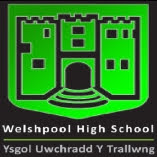Residents will find out more about the Newtown Mound this week
A major archaeological excavation in Newtown Town Hall Park has uncovered compelling evidence of the town's medieval defensive systems, with findings suggesting the earthwork dates back to the 13th or 14th century.
The three-week community excavation, completed this month, was led by Heneb – the Trust for Welsh Archaeology – in partnership with Newtown & Llanllwchaiarn Town Council. The investigation focused on the earthwork feature in the centre of the park, revealing a substantial buried ditch that may have formed part of the town's early urban defences.
The excavation uncovered a defensive ditch measuring more than two metres deep and over eight metres wide, indicating a major construction effort during Newtown's early formation. Medieval pottery fragments recovered from the lowest layers of the ditch, along with charcoal samples now undergoing radiocarbon dating, suggest the structure dates to a period of significant development and strategic importance for the town.
"The scale of the earthwork and the craftsmanship involved indicate a major effort to protect or define the town in its early formation," said the town council in announcing the findings.
The findings will be presented to the public at an event on 19th July at the Oriel Davies gallery, where the archaeological team will share their discoveries and gather community ideas about the site's future development.
The discovery adds to previous archaeological work at the nearby Newtown Mound, where excavations in 2022 by Clwyd-Powys Archaeological Trust attracted more than 115 volunteers over five weeks. That earlier project investigated theories about the mound's origins, including possibilities that it served as the base of a late castle founded by the Mortimers alongside their new borough in the 1280s, a 17th-century Civil War earthwork, or a prospect mount for Newtown Hall.
The latest excavation saw dedicated volunteers working alongside professional archaeologists, with the town council's tourism project officer supporting the community engagement effort. While parts of the original medieval construction have been altered or obscured by later landscaping, the excavation has shed new light on a crucial but little-understood aspect of Newtown's heritage.
A public event will take place on 19th July at the Oriel Davies gallery, where the archaeological team will share their findings and gather ideas from the community about the site's future. The event offers residents and visitors an opportunity to learn more about the discoveries and contribute to plans for interpreting the site.
The Town Council plans to work with Heneb and local partners to develop new interpretation panels in the park, making the site's story accessible to all. An accessible summary report and illustrations are now available online at www.heneb.org.uk, with further updates expected once laboratory analysis is complete.
Radiocarbon dating results are expected soon, which may provide more precise dating for the medieval defensive structure. The council is also developing plans for on-site interpretation boards, school activities and guided tours as part of its wider heritage-led regeneration and cultural tourism strategy.
The project represents part of the Town Council's ongoing commitment to heritage-led regeneration, helping both residents and visitors better understand the historical foundations that shaped modern Newtown.


















